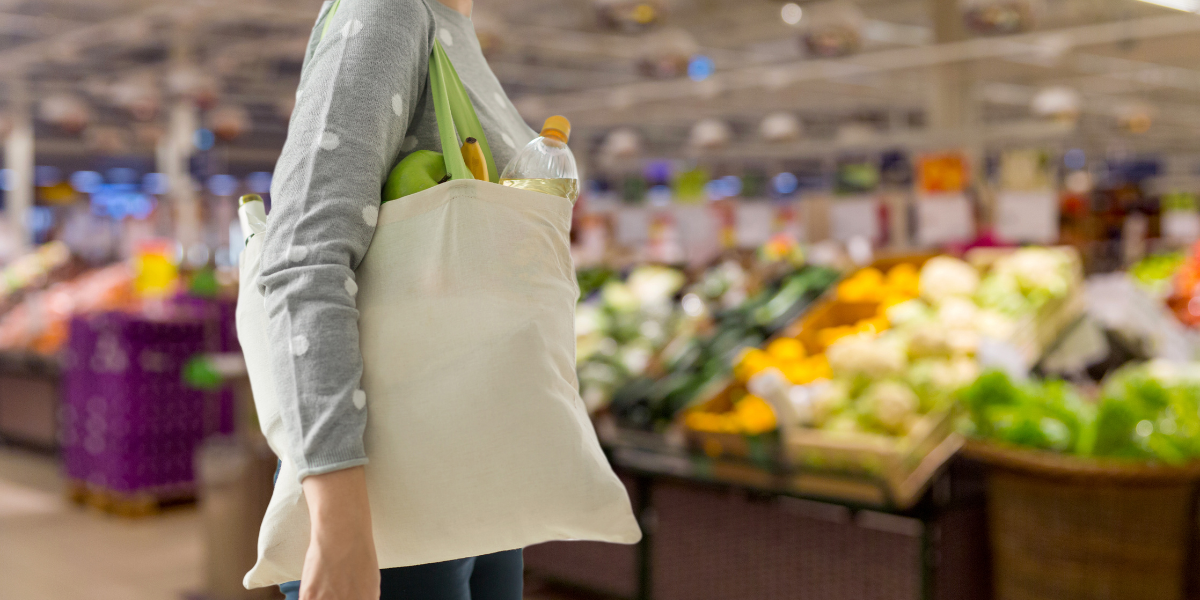Help Isom IGA recover from devasting floods

Sustainable Living Made Simple: Easy Ways to Go Green at Home and the Grocery Store
Written by Lauren McCalister
Mar 20, 2025
Sustainability isn’t just a buzzword—it’s a way to make small, meaningful choices that benefit both your family and the planet. Many people think living sustainably requires drastic lifestyle changes, but the truth is that even small, everyday actions can have a big impact over time.
Whether you’re looking for ways to reduce waste at home, lower your carbon footprint while grocery shopping, or simply become more mindful of your consumption, there are plenty of simple yet effective steps you can take. Here’s how you can make sustainability part of your routine without sacrificing convenience.
Sustainable Habits at Home
Making eco-friendly choices at home doesn’t have to be complicated. By focusing on reducing waste, conserving energy, and using reusable materials, you can make your household more sustainable with minimal effort.
1. Reduce Food Waste
Food waste is a major contributor to landfills, but with a little planning, you can cut down on unnecessary waste and save money in the process.
- Plan your meals ahead of time – Create a weekly meal plan and shopping list based on what you already have in your fridge and pantry.
- Store food properly – Use airtight containers, wrap herbs in damp paper towels, and freeze leftovers to extend their shelf life.
- Get creative with leftovers – Transform last night’s dinner into a new meal. For example, roasted vegetables can be blended into soup, and leftover rice can be used for fried rice or burrito bowls.
- Start composting – If you have food scraps like vegetable peels, coffee grounds, or eggshells, consider composting them instead of throwing them away. Composting enriches the soil and reduces methane emissions from landfills.
2. Save Energy and Water
Being mindful of energy and water use can help lower your utility bills while reducing your environmental footprint.
- Turn off lights and unplug electronics – When not in use, switch off lights and unplug chargers or appliances to prevent unnecessary energy consumption.
- Use energy-efficient appliances – Look for ENERGY STAR-certified products, which use less electricity without sacrificing performance.
- Run appliances efficiently – Only run dishwashers and washing machines with full loads to maximize energy and water use.
- Fix leaks – A dripping faucet may seem minor, but even small leaks can waste thousands of gallons of water per year.
- Wash with cold water – Using cold water for laundry can save energy while keeping your clothes in good condition.
3. Recycle and Reuse
Recycling is one of the easiest ways to reduce waste, but it’s important to do it correctly.
- Check local recycling guidelines – Not all items can be recycled in every area. Make sure to follow your community’s specific rules to avoid contaminating the recycling stream.
- Rinse out containers – Food residue can prevent recyclables from being processed properly. A quick rinse before tossing them in the bin makes a big difference.
- Choose reusable alternatives – Reduce waste by swapping out single-use items for reusable ones. Try using stainless steel straws, cloth napkins, refillable water bottles, and silicone food storage bags.
Sustainable Grocery Shopping Tips
Your grocery shopping habits play a big role in sustainability. From the types of products you choose to how you carry them home, there are plenty of ways to make eco-friendly choices while shopping.
1. Plan Your Shopping List and Buy Only What You Need
Buying only what you need helps reduce both food waste and excess packaging. A well-planned grocery list keeps you on track and prevents impulse purchases that might go uneaten.
2. Bring Your Own Bags and Containers
Single-use plastic bags are one of the biggest contributors to pollution, but this is an easy problem to solve. Keep reusable shopping bags in your car or near the door so you don’t forget them. Some stores even allow you to bring reusable produce bags and containers for bulk items.
3. Pay Attention to Packaging
Product packaging has a significant environmental impact, so consider how an item is packaged before purchasing:
- Opt for minimal or recyclable packaging – Choose products with less plastic or packaging that can be easily recycled.
- Look for compostable options – Some brands now offer compostable packaging, which is a great alternative to plastic.
- Buy in bulk when possible – Purchasing staple ingredients like rice, nuts, and dried beans in bulk reduces packaging waste.
4. Support Brands with Sustainability Initiatives
Many companies are working hard to reduce their carbon footprint, give back to the community, or improve sourcing practices. By supporting brands that prioritize sustainability, you’re helping drive demand for responsible business practices.
Small Changes, Big Impact
Sustainability isn’t about being perfect—it’s about making small, conscious choices that add up over time. Whether you’re reducing food waste at home, bringing reusable bags to the store, or choosing sustainably sourced products, every effort counts.
By incorporating these simple habits into your daily routine, you’re not only benefiting the environment but also setting a positive example for future generations. Start small, stay consistent, and remember: the choices you make today help create a healthier, more sustainable world for tomorrow.